Birds are very common animals in our lives. On the streets, you can always see jumping sparrows, and sometimes pigeons, swallows, magpies, etc. If classified according to major categories, birds can be divided into land birds, migratory birds, raptors, songbirds, climbing birds, etc. Of course, if we break it down further, we will also find many different types of birds, such as geese, swallows, eagles, storks, pigeons, cuckoos, cranes, gulls, finches, parrots, etc. Let’s find out together!
1. Anser (scientific name: Anser)
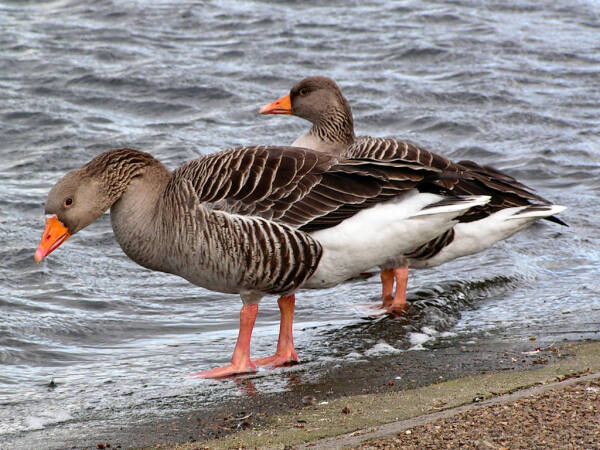
Goose is the general name for the vertebrate bird family Anatidae subfamily Ans. It is a large swimming bird and is good at flying. They are generally similar in appearance to domestic geese or slightly smaller, with wide and thick beaks, relatively broad beaks, and blunt comb-like protrusions in their beaks. The body feathers of most geese are mainly light gray-brown with markings. They feed on young leaves, fine roots, seeds, etc. of plants, and some also eat grains in farmland. In my country, swan geese, bean geese, white-fronted geese, etc. are relatively common migratory birds. They fly back from Siberia in the north every year after the spring equinox, and then fly south after the autumnal equinox.
Geese build nests and breed in the north. Their nests are very simple. They are usually made into a basin with reeds and aquatic plants near the water, with only a layer of feathers as an inner covering. Female geese lay 7 to 8 eggs each time, and the chicks will hatch out after about 4 to 5 weeks. After the baby geese are born, they can swim in the water for food and start flying in summer. When flying south, the geese usually line up in a "human" or "one" formation, with the old geese taking the lead and gliding in the air using updrafts to save energy. In order to fly long distances, they will constantly change formations and replace the leading goose. When resting on the journey, the geese will eat fish, shrimp, aquatic plants and other food, and the old geese will keep watch to prevent enemy attacks. It usually takes about 1 to 2 months for them to reach the southern tropics.
2. Swallow (scientific name: Hirundo rustica)
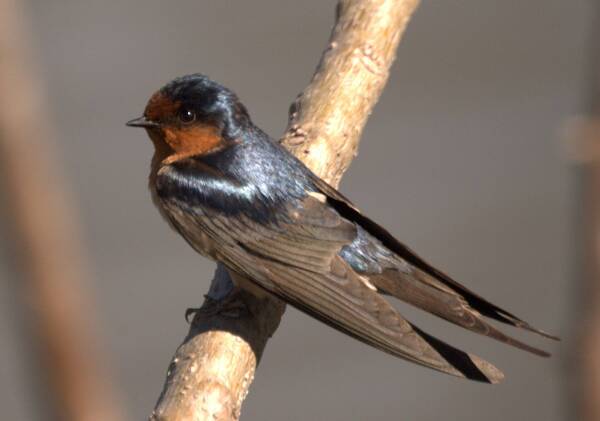
Xiyan
Swallow, whose scientific name is Barn Swallow, is a collective name for 74 species of birds in the order Passerineidae. They are small in stature, with narrow wing tips, concave tails, short beaks, weak legs, and sparse feathers. The plumage is mostly solid color, or blue or green with metallic luster. In most species, the male and female have similar plumage colors. Swallows usually catch pests in the air, so they are one of the most flexible passerines. They mainly feed on insects such as mosquitoes and flies and are widely regarded as beneficial birds. They are good at drilling holes in tree holes, wall cracks and sandy shores to make nests. They also build mud nests on protruding parts such as corridors, roofs and eaves in urban and rural areas. Each breeding cycle usually produces 3 to 7 eggs.
3. Eagle (scientific name: Accipiter virgatus)
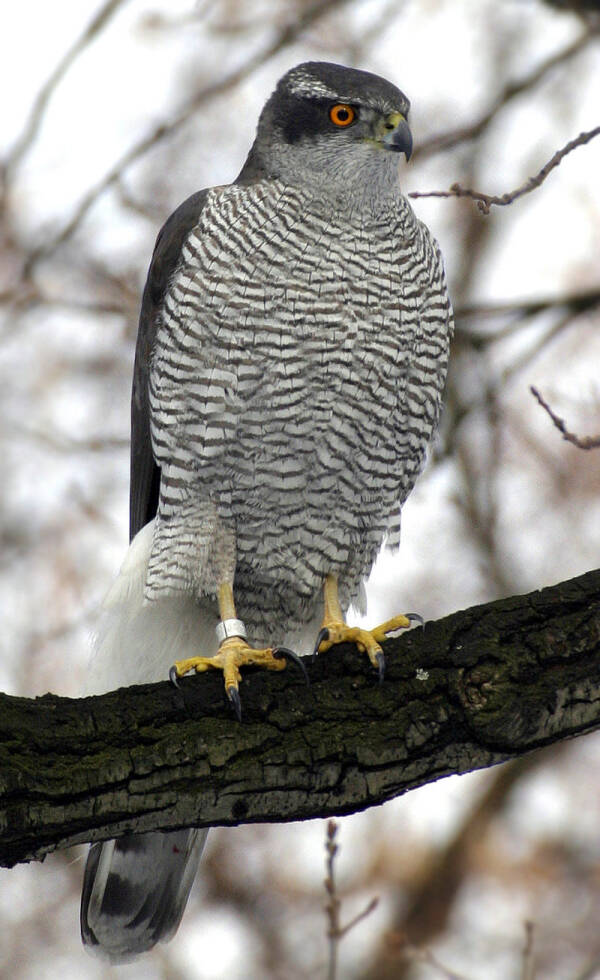
Goshawk
In a broad sense, hawk refers to a class of small to medium-sized falcon-like birds that are active during the day, especially species of the genus Eagle, including goshawks and sparrowhawks. The term eagle in a broad sense is also often used to refer to other species of birds in the family Accipitridae, and is even sometimes used to refer to some birds in the family Falconidae. Eagles are carnivorous animals that hunt prey such as mice, snakes, hares, or small birds, while large hawks (eagles) hunt prey such as goats, sheep, and fallow deer. Eagles are majestic in appearance and ferocious in temperament. They are classified as birds of prey in zoology. In our country, the three most common eagles are goshawk, sparrowhawk and sparrowhawk. The "Wildlife Protection Law" of the People's Republic of China clearly stipulates that all raptors are national protected animals of level two or above, and capturing, selling, purchasing, raising and harming them is prohibited.
4. Stork (scientific name: Ciconiidae)
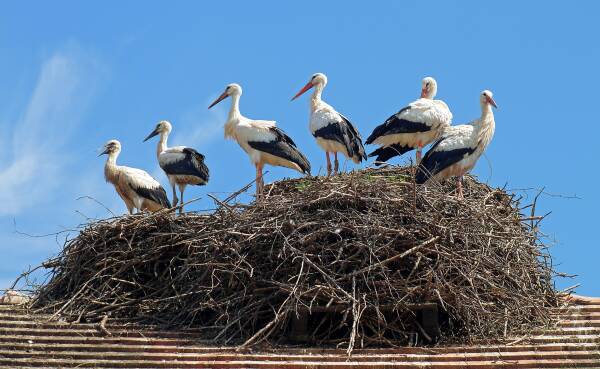
White Stork
Stork is a general name for a large waterbird family, including 19 species. They are found in most warm zones on Earth. Storks are migratory birds and are good at flying. They have long legs, webbed claws, and long, strong beaks. Feathers are usually white and black, but some species of storks have almost no feathers on their heads or on their heads and necks.
5. Pigeon (scientific name: Columba)
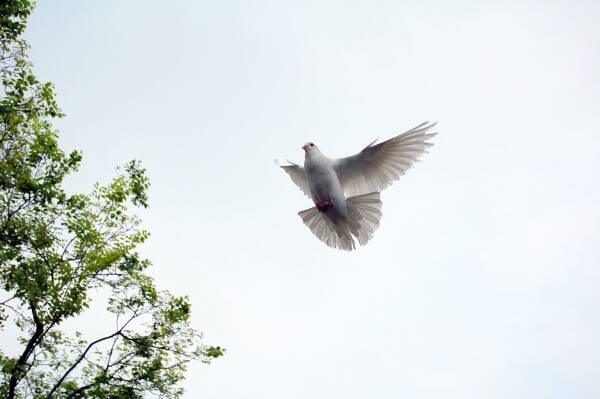
white dove
Pigeons are a very common bird and are widely bred around the world. It belongs to the collective name of hundreds of species of birds in the family Doveidae. The pigeon we usually refer to is just one species of the genus Pigeon, and usually refers to domestic pigeons. Among domestic pigeons, the most common one is the homing pigeon, which is mainly used for communication and competition. Pigeons have coexisted with humans for thousands of years. Archaeologists have discovered the first image of a pigeon in ancient artifacts excavated, which was unearthed in Mesopotamia (now Iraq) in 3000 BC.
6. Cuckoo (scientific name: Cuculidae)
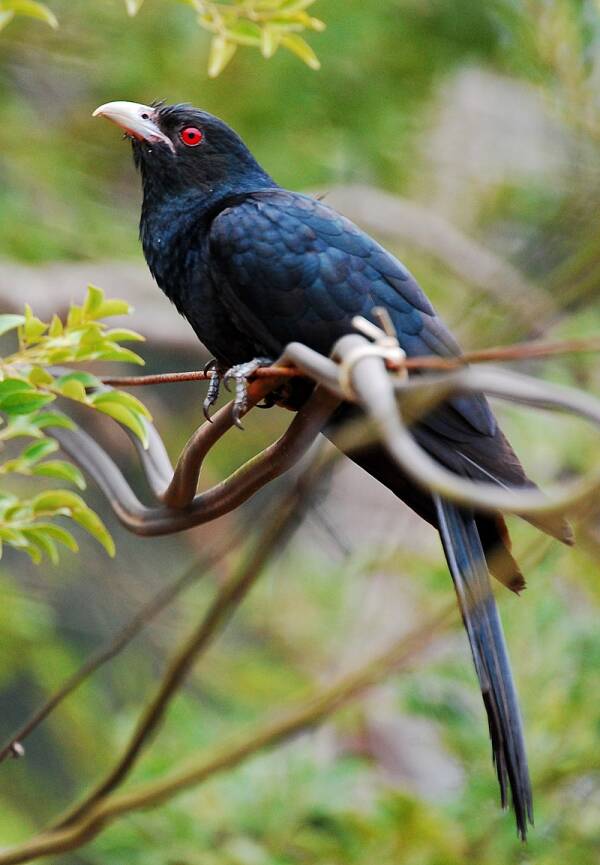
noisy cuckoo
The original meaning of "虙" refers to a small bird, especially the cuckoo. Also known as Guo Gong, Du Yu, Cuckoo, and Zigui, it is a common bird. Their upper bodies are grey-brown and their lower bodies are white with dark horizontal spots. The distinctive feature of the cuckoo is its two-syllable call, and it will lay eggs in other birds' nests to incubate them, making it a reliable beneficiary bird. In the word "肙", from the sound side of "bird", from the meaning side of "肙", it means "small bird"
7. Crane (scientific name: Gruidae)
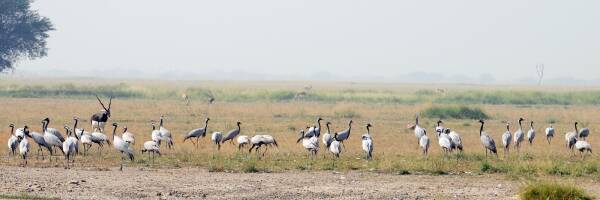
Demoiselle Cranes
Cranes refer to birds in the family Crasidae, which are some beautiful and elegant large wading birds. The Crane family is divided into two subfamilies, Crane subfamily and Crown Crane subfamily, with a total of 4 genera and 15 species. Among them, the Crane subfamily includes 3 genera and 13 species of cranes, which are widely distributed on all continents except South America. East Asia is the region with the richest crane subfamily. China has 2 genera and 9 crane species, accounting for more than half of the 15 crane species in the world. It is one of the countries with the richest crane species. All these nine species of cranes are China's national key protected wild animals. The hind toes of Crassinae are small and set high, unable to interlock with the front three toes, so they cannot perch in trees. There are only 1 genus and 2 species in the Crowned Crane subfamily, which are endemic to Africa. They have different living habits from cranes and can live in trees. In Chinese culture, cranes enjoy a lofty status, especially the red-crowned crane, which is regarded as a symbol of longevity, good luck and elegance. It is often associated with gods and goddesses, so it is also called "Crane".
8. Gull (scientific name: Laridae)
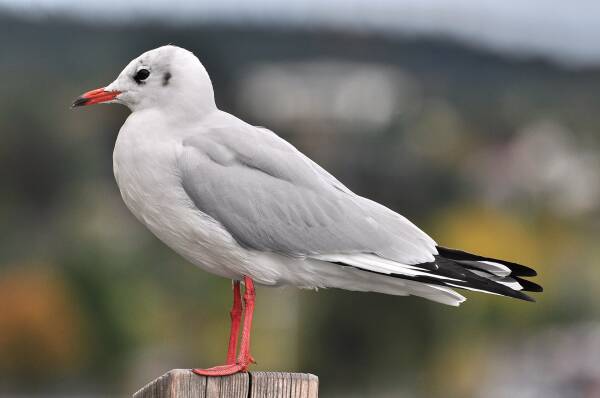
red-billed gull
The gull is a member of the gull family. It looks similar to a white pigeon or a small white chicken and has a ferocious personality. They have long legs, a long mouth, webbed toes and are good at swimming. Gulls like to fly in flocks and usually lay eggs in March. Gulls mainly live by the sea and are often called seagulls; some live by lakes or rivers and are called riparian gulls. There is also a kind of gull, which comes and goes with the rise and fall of the sea tide. People call it "letter gull".
9. Sparrow (scientific name: Passeriformes)
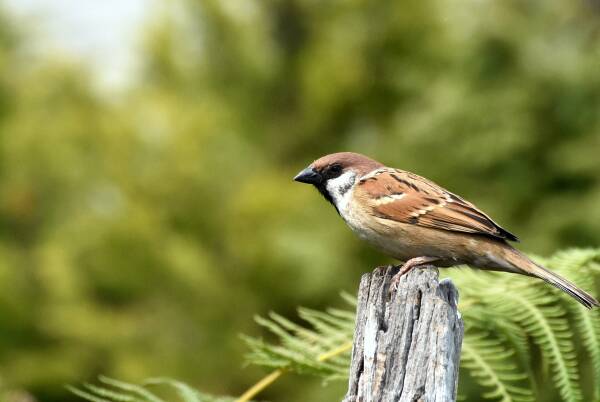
sparrow
Finches are an important family of birds, with 152 genera and 677 species of birds in the world. In my country, this family has 21 genera, 86 species and 123 subspecies. The rosefinch, Tibetan sparrow, blood sparrow, golden-naped black sparrow, red-headed bullfinch, scarlet bunting and indigo bunting are the specialty bird species of our country. The food of finches mainly includes fruits, seeds and insects. Among them, the genus Sparrow is a comprehensive name for small birds. Their body size and body color are very similar, and their upper bodies are generally mottled with brown and black, so they are called sparrows. There are 9 primary flight feathers in sparrows. The light-colored edges of the outer flight feathers (except the first one) are slightly expanded at the base and proximal ends of the feathers and interspersed with each other, forming two horizontal spots, which is particularly conspicuous when flying. Their mouths are short, thick and strong, cone-shaped, with a slightly curved peak.
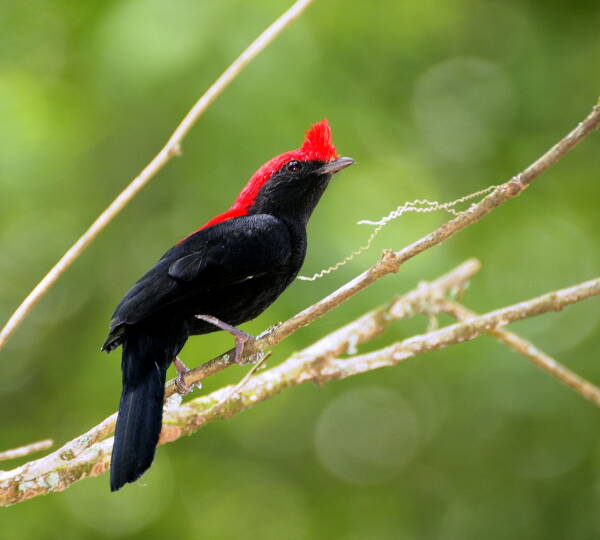
Crested Flycatcher
With the exception of tree sparrows, males and females have different body colors. There are 27 species of this family in the world, 5 of which are distributed in my country. Their distribution area is quite wide, especially tree sparrows, which are common in various provinces and regions in my country. Except for the black-breasted sparrow, which has a narrow distribution area and only appears in the line from Yanqi to Taxkorgan at the southern foot of the Tianshan Mountains, the other species are basically very common. Abroad, finches are distributed on all continents and adjacent islands, especially in Europe and Asia. They are more widespread and common and are a typical species of the Palearctic. Common sparrows (such as tree sparrows) and house sparrows are one of the most common birds in urban and rural areas of my country. They were once mistakenly regarded as "four pests" and suffered large-scale hunting; the main difference between the two is House sparrows have dark spots on their cheeks, but house sparrows do not.
10. Parrot (scientific name: Psittaciformes)
Parrots are a type of bird with bright feathers and a good singing ability under the order Psittaciformes. They are usually climbing birds. Their toes are divided into double-toed and four-toed types, which are suitable for grasping. Their beaks are strong and powerful, suitable for eating hard-shelled fruits. Parrots have brightly colored feathers and are often kept as pets. They are admired and loved for their beautiful feathers and ability to learn human language skills. The largest among parrots is the purple-blue macaw, which can reach 100 centimeters in length, while the smallest is the blue-crested macaw, which is only 12 centimeters in length.
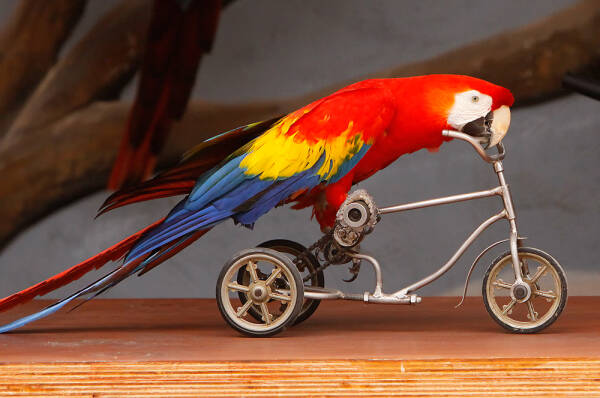
The food habits of parrots are mainlyThey mainly eat fruits, seeds, nuts, berries, buds and twigs of plants on trees or on the ground. A small amount of insects will also be eaten by them as part-feeders. Lorikeets feed mainly on pollen, nectar and soft, juicy fruits.
Parrots are found all over the world and are widely distributed in temperate, subtropical and tropical areas. They are one of the largest families in the class Birds, divided into 2 families, 82 genera, and 358 species. They are mainly distributed in tropical forests. Some southern hemisphere parrot species have also expanded into temperate regions, while others are found on remote islands. Parrot species are most abundant in Latin America and Oceania, but are less numerous in Africa and Asia. However, Africa also has some very famous parrots, such as gray parrots, love parrots, peony parrots, etc. The best known of the parrots of Latin America are various species of large macaws, while those of Oceania are even more diverse.
animal tags:
We created this article in conjunction with AI technology, then made sure it was fact-checked and edited by a Animals Top editor.